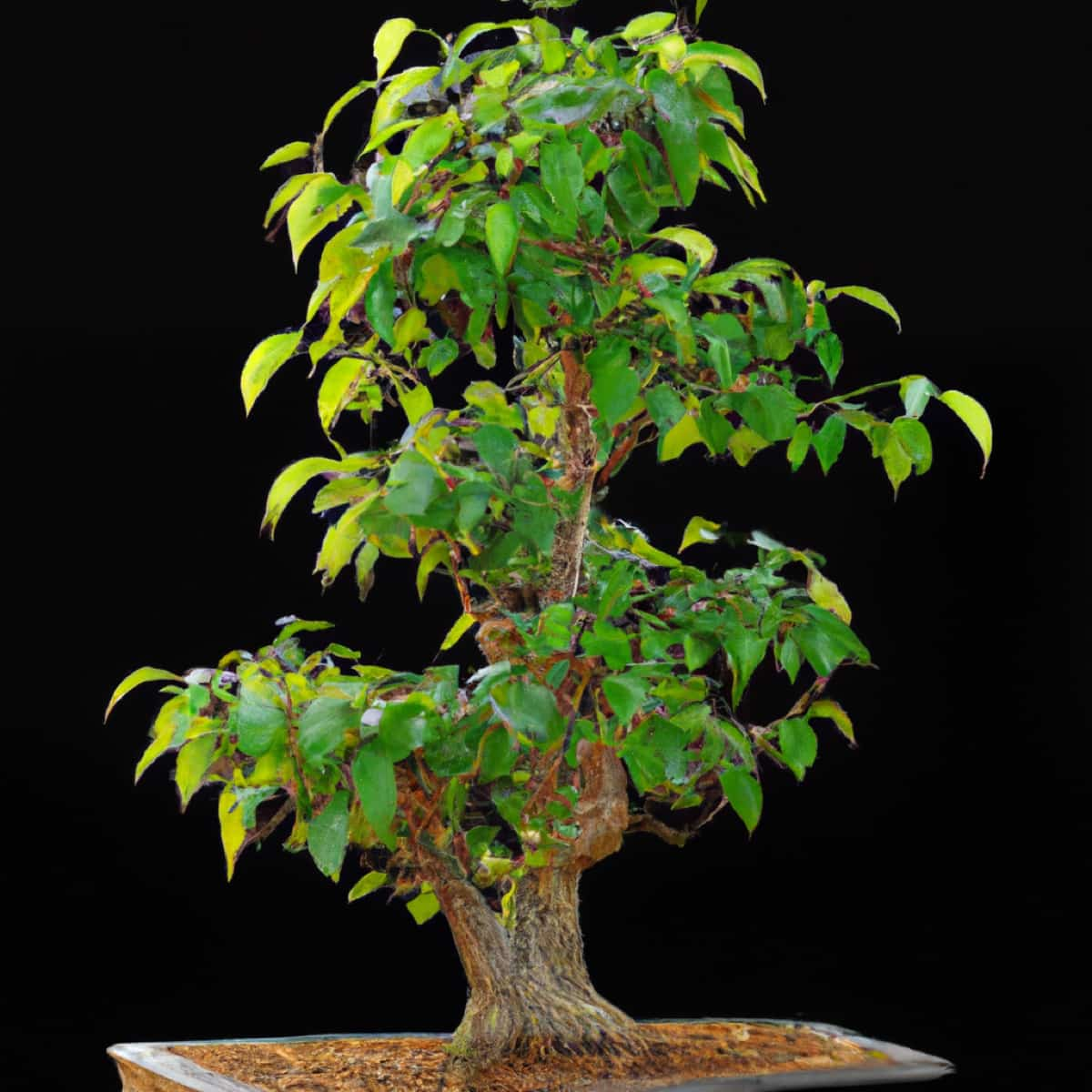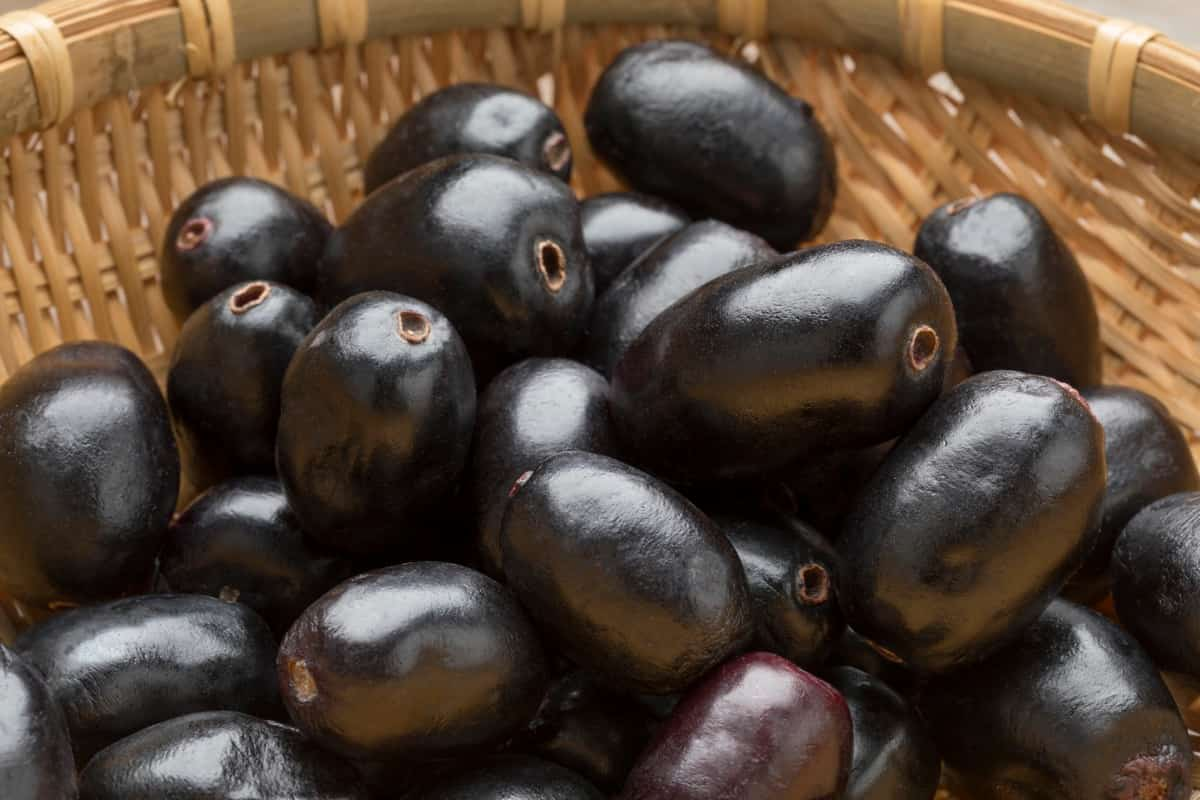Bonsai Jamun Trees is a coveted addition to any green space, bringing a blend of aesthetics and culture into the home. This miniature tree, native to India, is recognized for its deep purple fruits and vibrant green foliage, offering a striking contrast. Cultivating a Bonsai Jamun tree at home might be a rewarding endeavor. This small-scale tree can thrive through appropriate care and attention, beautifying your living space with its striking presence.

How to Grow and Care for Jamun Bonsai
How to Plant Bonsai Jamun Trees Indoors
Planting a Bonsai Jamun tree indoors requires dedication but yields rewarding results. Begin by soaking the seeds in water overnight. This softens the outer layer, preparing them for germination. Fill a shallow tray with a good quality bonsai soil mix the next day. Position the seeds on the soil surface, spacing them apart. Please lightly layer the seeds with a thin coat of the identical soil mixture.
Water the tray thoroughly, but avoid overwatering to prevent waterlogging. Position the tray in a warm, well-lit area, ensuring it is not exposed to direct sunlight. Continue to water regularly, allowing the soil to dry out slightly between waterings. The seeds should begin germinating within a few weeks, marking the first step towards growing your own Bonsai Jamun tree indoors.
Step-By-Step Guide to Growing Bonsai Jamun From Seeds
After successful germination, the young saplings need utmost care to develop into healthy Bonsai Jamun trees. As the saplings grow, provide ample light but shield them from harsh, direct sunlight. As they grow bigger, moving them into individual pots is crucial, giving them ample space to grow and develop. Carefully remove the sapling from the germination tray and plant it into a suitable bonsai pot. Water the sapling immediately after repotting to help it settle into the new pot. It’s important to maintain a consistent watering schedule during this stage of growth.
Essential Care Tips for Bonsai Jamun Plants
Proper care for Bonsai Jamun trees extends beyond watering and repotting. It is crucial to consider factors such as sunlight, humidity, and feeding. As a general rule of thumb, Bonsai Jamun trees thrive in humid conditions. Therefore, misting the leaves of your plant regularly can aid in creating a humid environment. It’s also essential to feed the plant with a balanced bonsai fertilizer. Regular feeding ensures that the Bonsai Jamun tree receives all the necessary nutrients for its growth and fruit production.
Best Soil Mix for Bonsai Jamun Trees
The best soil mix for Bonsai Jamun trees is one that provides good drainage while retaining necessary nutrients. The optimal composition typically consists of clay, silt, and sand in combination. It is also beneficial to add organic matter like compost or manure to the mix. This enhances the soil’s fertility, promoting healthier growth of the tree. The goal is to create a soil mix that is loose and airy, enabling the roots to grow and breathe and allowing for proper water management.
Pruning Techniques for Maintaining Bonsai Jamun Shape
Pruning is an essential part of maintaining the desired shape of your Bonsai Jamun tree. Regular pruning not only maintains the tree’s form but also stimulates further growth. Begin by identifying the branches you want to keep and those that need removal. Branches that seem out of place or disrupt the tree’s overall form should be pruned. Make sure to use a sharp, clean tool for pruning to prevent damage to the tree. Prune in early spring or late fall when the tree is in a dormant state.
In case you missed it: How to Grow and Care for Java Plum/Jamun: A Step-By-Step Comprehensive Guide for Beginners

Watering Schedule for Healthy Bonsai Jamun Growth
The watering schedule for Bonsai Jamun trees must be consistent for healthy growth. As a general rule, water the tree when the topsoil appears dry. Overwatering may result in root rot, a prevalent problem among Bonsai trees. Equally crucial is preventing complete soil dehydration, which can lead to tree desiccation. It’s best to water the tree in the early morning or late evening, avoiding the heat of the day.
Sunlight Requirements for Bonsai Jamun Trees
Bonsai Jamun trees thrive in well-lit conditions but are sensitive to harsh, direct sunlight. Therefore, it’s best to place your Bonsai Jamun tree in a location that receives bright, indirect light. If placing the tree outdoors, choose a location that is shaded during the harshest parts of the day. If the tree is kept indoors, ensure it is positioned near a window with plenty of light.
Common Pests and Diseases Affecting Bonsai Jamun Plants
Common pests that affect Bonsai Jamun plants include aphids, scale insects, and spider mites. Regular inspection of the tree can help detect and manage these pests early. Diseases that could affect Bonsai Jamun plants include root rot, caused by overwatering and fungal diseases. Proper watering and maintaining good air circulation around the plant can help prevent these diseases.
Winter Care for Bonsai Jamun Trees
Bonsai Jamun trees are tropical and, therefore, sensitive to cold temperatures. In winter, it is essential to protect the tree from freezing conditions. Consider moving the tree indoors during winter if you live in a cold climate. Ensure it receives adequate light and is watered appropriately.
Repotting Bonsai Jamun: When and How to Do It
Repotting is a necessary part of Bonsai Jamun tree care. It is generally done every two to three years. To transplant, delicately extract the tree from its existing container. Prune the roots to maintain the tree’s size, then replant it in fresh bonsai soil. Water the tree thoroughly after repotting. This helps the tree adjust to its new home and promotes root growth. Repotting not only gives the tree fresh soil and more space to grow but also allows you to inspect the health of the roots.
In case you missed it: Project Report of 1-Acre Java Plum/Jamun Farming: Production Economics, Cultivation Cost and Profit Analysis

Conclusion
Cultivating a Bonsai Jamun tree at home is an exercise in patience, care, and a little green-thumbed love. From planting the seeds and carefully tending the young saplings to nourishing the mature tree, each stage brings unique challenges and rewards. A well-cared Bonsai Jamun tree offers an aesthetic element to your indoor or outdoor green spaces and imparts a sense of tranquillity and peace.
The journey of nurturing a Bonsai Jamun tree extends beyond horticultural interests, transforming into an art form that combines nature, cultivation, and artistic vision. With the right care and attention, a Bonsai Jamun tree can flourish, becoming a cherished, long-term companion in your gardening journey.
- Feed Your Flock for Less: Top 10 Tips to Save on Chicken Feed
- Ultimate Guide to Ossabaw Island Hog: Breeding, Raising, Diet, and Care
- Hatching Answers: The Top 10 Reasons Your Chickens Aren’t Laying Eggs
- Eggs and Economics: Breaking Down the Cost of Raising Backyard Chickens
- Defend Your Greens: Proven Methods to Keep Iguanas Out of Your Garden
- Ultimate Guide to Cinnamon Queen Chicken: A Comprehensive Guide for Beginners
- Ultimate Guide to California Tan Chicken: Breeding, Raising, Diet, Egg-Production and Care
- Ultimate Guide to Marsh Daisy Chicken: Breeding, Raising, Diet, and Care
- 10 Types of Chicken Farming Businesses You Can Start for Profits